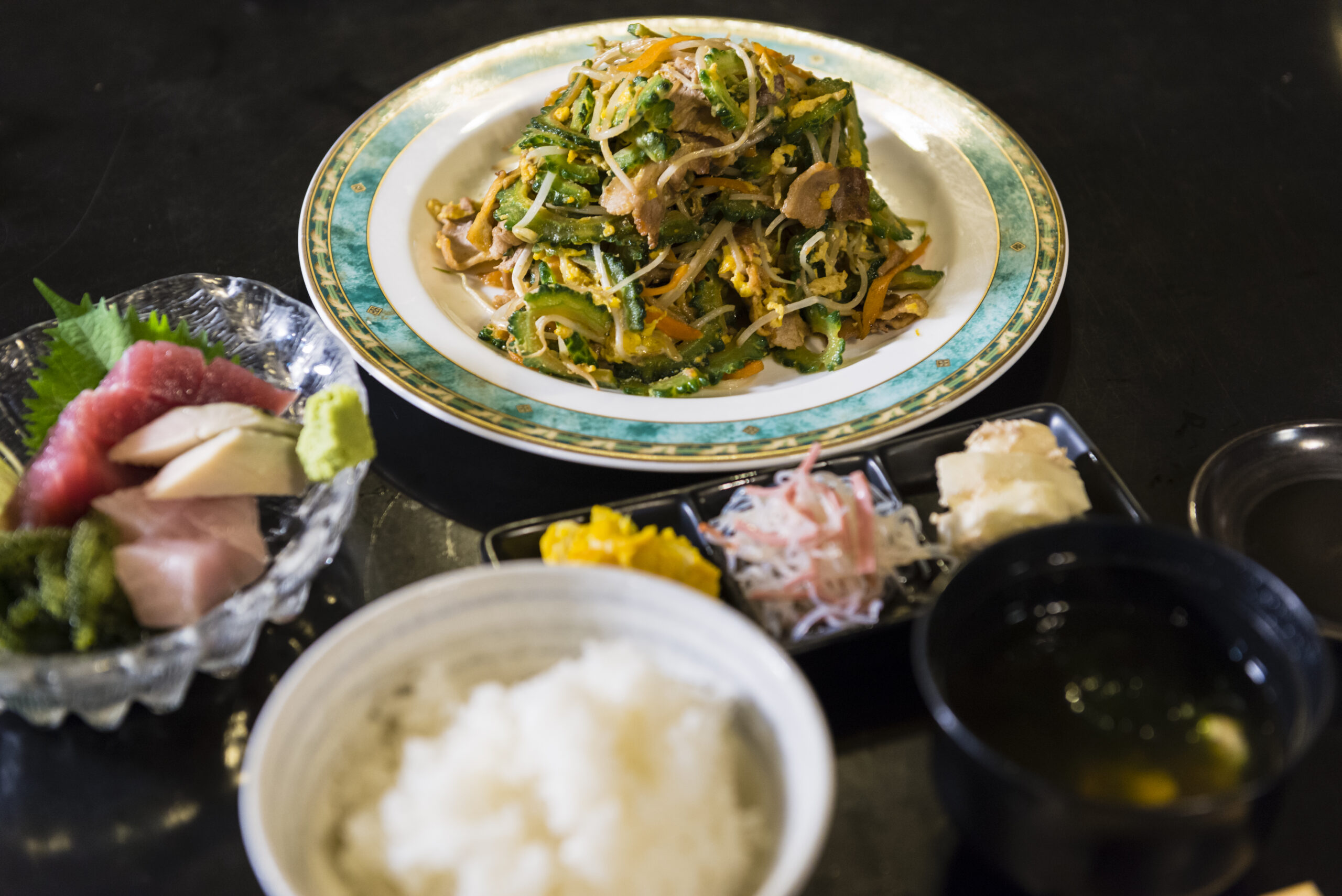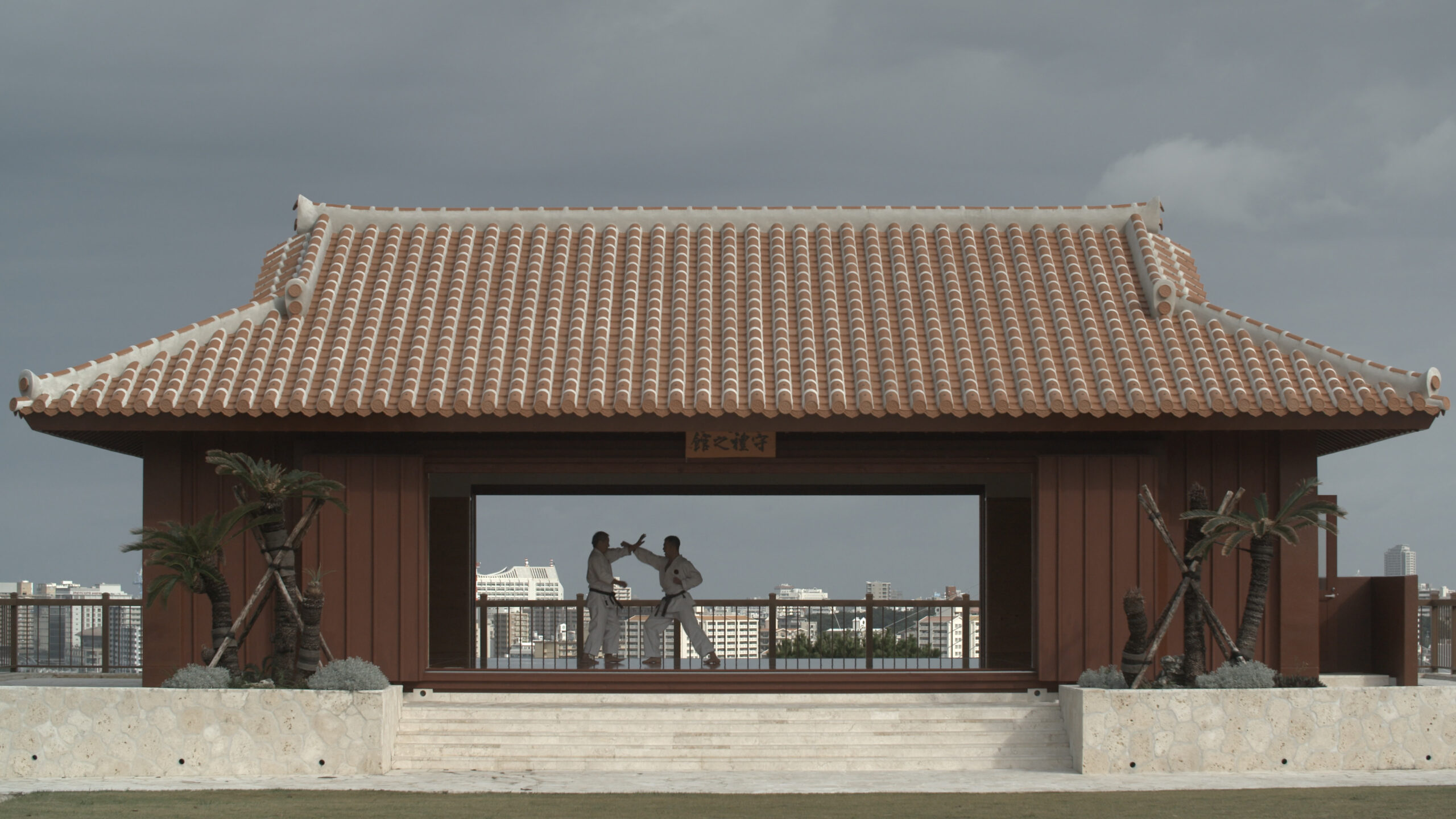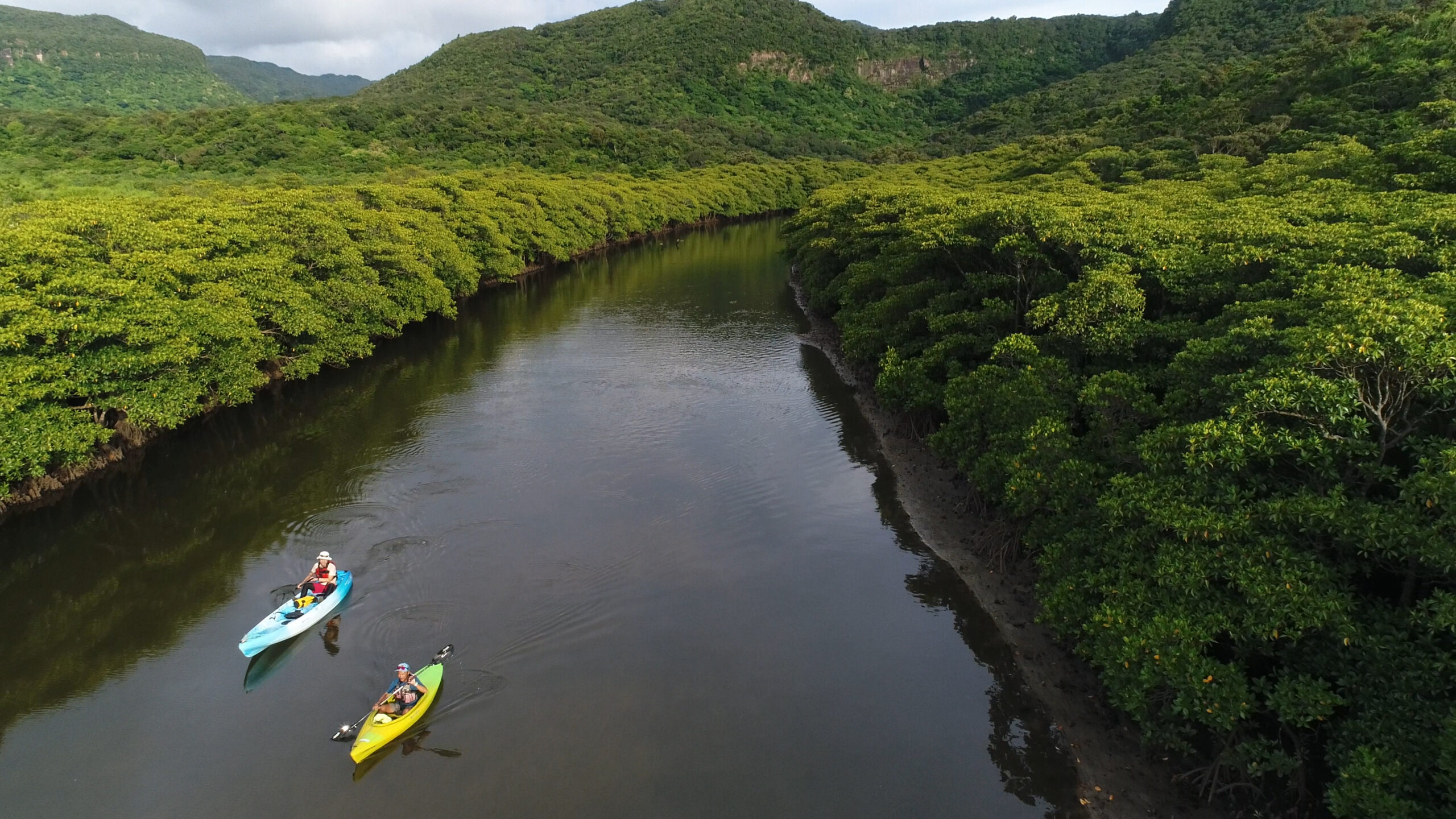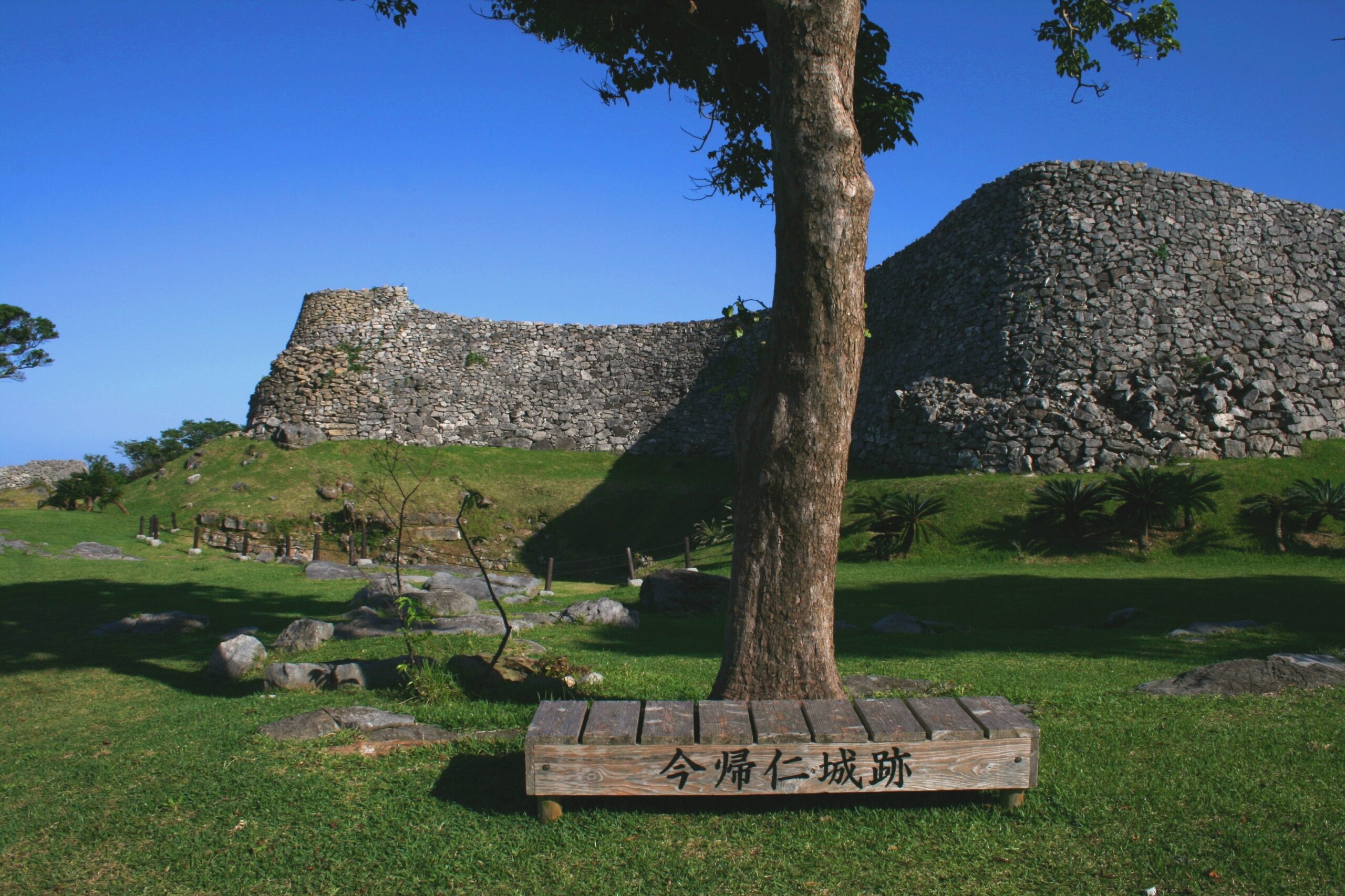What makes Okinawa Japan’s tropical adventure paradise

This article is brought to you by the Japan National Tourism Organization (JNTO) Sydney Office.
Adventures in Japan go beyond the snow. When locals want to escape the cold, they head to Okinawa. Japan’s southernmost prefecture is a tropical paradise and only a short three-hour flight from Tokyo.
The far-flung archipelago of 160 islands is perfect for adventurers eager for summertime thrills. Many descend on Okinawa Main Island for its golden sand beaches, unique outdoor activities in jungles and waterways, and thriving marine life. Its distinct cultural heritage of a bygone era and relaxed pace of life is also a drawcard for curious travellers.
Discover why Okinawa is Japan’s favourite summertime getaway with these must-do experiences found nowhere else.
Adventurous eating in the “Blue Zone”
Okinawa is one of five Blue Zones in the world. In these fabled regions, many residents reach their 100th birthday. They achieve the milestone by leading a healthy, happy, and satisfied life, with the pathway to contentment seemingly simple for Okinawans.
One key factor is nutrition. Okinawans mostly follow a plant-based diet, with the purple sweet potato their secret weapon. It’s usually served alongside other locally grown, brightly coloured fresh vegetables, appeasing both tastebuds and wellbeing.
A great way to savour typical Okinawan cuisine is with a homestay at Yambaru Hotel Nammei Shinshitsu. The traditional home-cooked feast in the lodging is one of 20 customised experiences hosted by Okinawans following their ikigai. The purpose-driven concept is driven by a reason for being -doing something that brings joy and adds value to one’s life. This includes hobbies, friends and keeping active – another key to longevity.

Okinawa cuisine. Image credit: Okinawa Media Library
Practice Karate kicks
There’s no better way to test your tenacity and vigour than with a Karate lesson. Okinawa is the birthplace of Karate, with the ancient martial art dating back to the Ryukyu Kingdom. It is a unique part of the prefecture’s culture, with over 400 training facilities called dojos offering seminars and multi-day programs to practice Karate throughout the island and taught by a grandmaster.

Karate in Okinawa. Image credit: Okinawa Media Library
Tour de Okinawa
One of the best ways to sightsee Okinawa is by pedal power. Never mind working up a sweat; enjoy a warm sea breeze on a scenic island-hopping adventure via bike or e-bike.
Start at the tip of the Kouri Bridge, stretching two kilometres. It connects Okinawa’s main island to Kouri Island, forming part of the 58km-long Motobu Peninsula cycling route along the north coast. Besides admiring blue seas, spot turtles, sea stacks, sugar cane plantations, forested mountains, and farm fields, with many vantage points to enjoy sweeping views along the way.
If you are keen on a cycling challenge, test your stamina by participating in the annual Tour de Okinawa race. Japan’s premier cycling event journeys 346km around the prefecture in multiple race categories, including the renowned two-day international tournament. It also includes races for families and citizens to get in on the two-wheel action around the island.


Cycling on Kouri Island; Kouri Bridge, Okinawa. Image credits: Okinawa Media Library
Kayak through mangroves
Explore Okinawa’s inland waterways and complex ecosystems on a kayak. While mangroves are a rarity elsewhere in the country, they are abundant in Okinawa, with four varieties found.
Several tour operators offer guided tours along the Hija River. Soak up the island’s natural beauty as you paddle the emerald river fringed by thirsty greenery. Remember to look up: Okinawa has abundant bird life, and the mangroves are a haven for feathered visitors.

Kayaking through mangroves. Image credit: Okinawa Media Library
Roam castle ruins
Okinawa is more than just blissful beaches, healthy eating, and combative kicks; be wowed by the foundations of its past by visiting castle ruins. Before it became the Ryukyu Kingdom, power was sought over Okinawa’s main island by three nations: the north’s Hokuzan, centrally located Chuzan, and the south’s Nanzan. Remnants of each ruler are evident today, with five castles listed as UNESCO World Heritage sites.
Go back to the 13th century, pre-Ryukyu period, wandering the ruins of Nakijin (Nakijin-jo) Castle. Located in the island’s northwest, it was once the second-largest castle. It became the residence of the Ryukyuan government when the kingdom was formed in 1429.
The castle is encircled by forests and makes for an enchanting day out delving into Okinawa’s past. Walk in the shadows of the castle’s 1.5km limestone wall remains and follow hiking trails around the fortress, hearing nature’s soundtrack filled with birdsong and cicada strums.

Nakijin-jo Castle ruins. Image credit: Okinawa Media Library
Go from nature to city views exploring Shuri (Shuri-jo) Castle. The former Ryukyu royal palace within Naha’s city district was built in the 14th century and is a perfect example of the kingdom’s distinct architectural style. The red-roofed landmark has been restored several times over its 700-year existence. While parts of the castle are currently under repairs following a fire in 2019, you can still admire its splendour within citadel walls and visit exhibits.
Sail the seas on a Sabani
Gain a new perspective of island life onboard a Sabani. Okinawan fishermen have sailed in these slender, hand-carved wooden boats for centuries, with Ogimi village boat carpenter and captain Teppei Hentona offering two-hour cruises in peaceful Shioya Bay.
Some muscle flexing is required, manoeuvring the boat with an oar resembling an enormous cricket bat. Yet, once the Sabani’s sail is hoisted, relax and take in the beauty of the surrounding green hills. Now that’s living.


Teppei Hentona and a Sabani. Image credits: Julia D’Orazio
For more information, visit Japan National Tourism Organization (JNTO) Sydney Office: https://www.japan.travel/en/au/
This article is brought to you by the Japan Tourism Organization (JNTO) Sydney Office. Julia travelled to Okinawa as a guest of JNTO.

